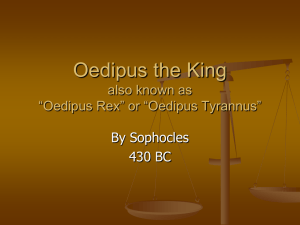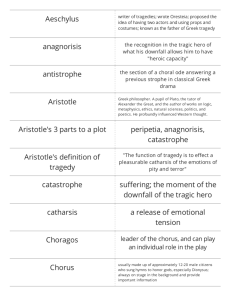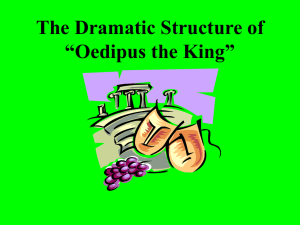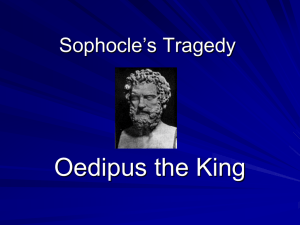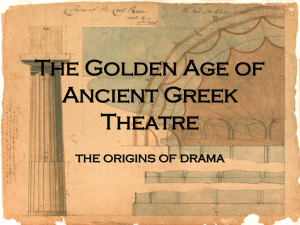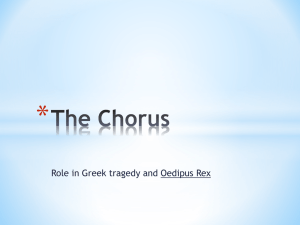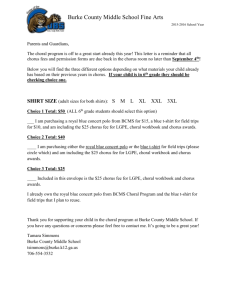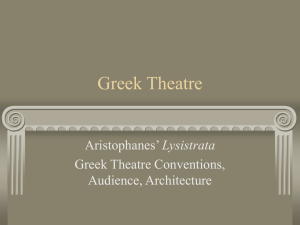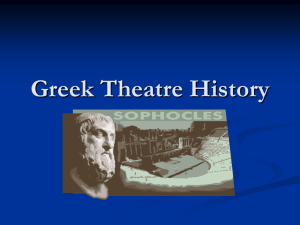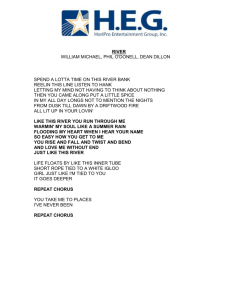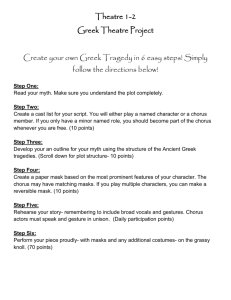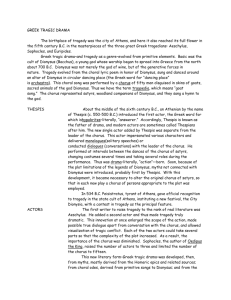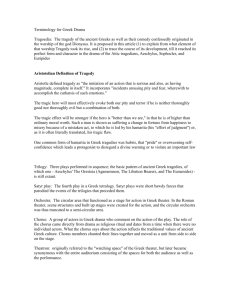WORD SEARCH: Ancient Greek Theatre Vocabulary
advertisement
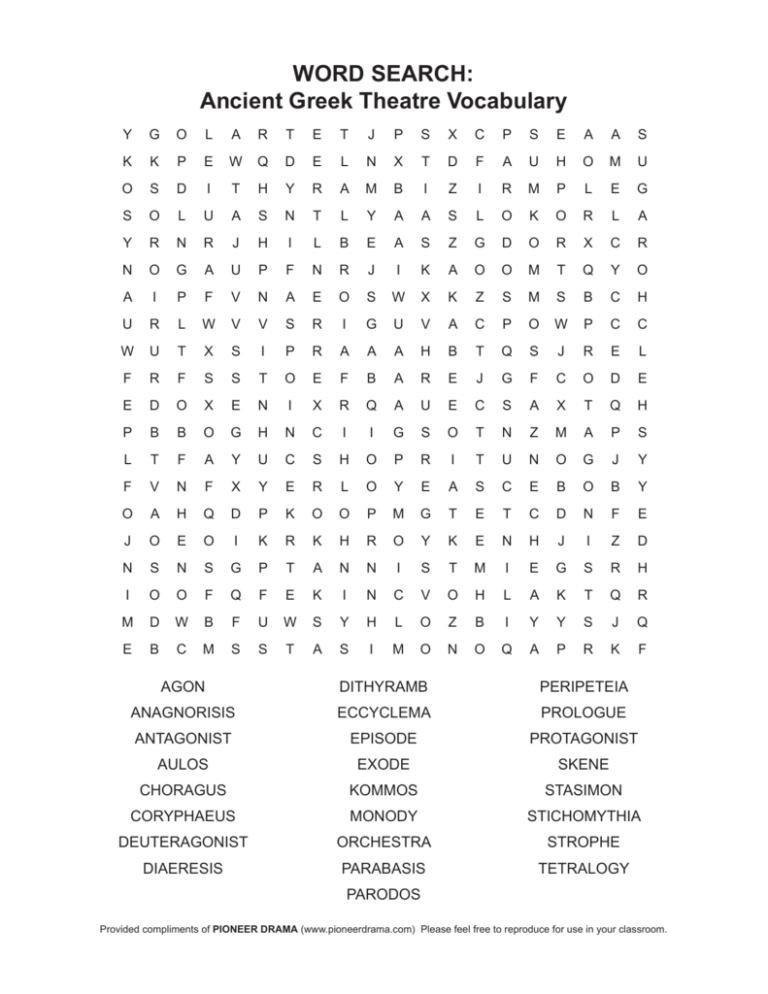
WORD SEARCH: Ancient Greek Theatre Vocabulary Y G O L A R T E T J P S X C P S E A A S K K P E W Q D E L N X T D F A U H O M U O S D I T H Y R A M B I Z I R M P L E G S O L U A S N T L Y A A S L O K O R L A Y R N R J H I L B E A S Z G D O R X C R N O G A U P F N R J I K A O O M T Q Y O A I P F V N A E O S W X K Z S M S B C H U R L W V V S R I G U V A C P O W P C C W U T X S I P R A A A H B T Q S J R E L F R F S S T O E F B A R E J G F C O D E E D O X E N I X R Q A U E C S A X T Q H P B B O G H N C I I G S O T N Z M A P S L T F A Y U C S H O P R I T U N O G J Y F V N F X Y E R L O Y E A S C E B O B Y O A H Q D P K O O P M G T E T C D N F E J O E O I K R K H R O Y K E N H J I Z D N S N S G P T A N N I S T M I E G S R H I O O F Q F E K I N C V O H L A K T Q R M D W B F U W S Y H L O Z B I Y Y S J Q E B C M S S T A S I M O N O Q A P R K F AGON DITHYRAMB PERIPETEIA ANAGNORISIS ECCYCLEMA PROLOGUE ANTAGONIST EPISODE PROTAGONIST AULOS EXODE SKENE CHORAGUS KOMMOS STASIMON CORYPHAEUS MONODY STICHOMYTHIA DEUTERAGONIST ORCHESTRA STROPHE DIAERESIS PARABASIS TETRALOGY PARODOS Provided compliments of PIONEER DRAMA (www.pioneerdrama.com) Please feel free to reproduce for use in your classroom. WORD SEARCH SOLUTION: Ancient Greek Theatre Vocabulary AGON—a contest. ANAGNORISIS—the moment of recognition when the protagonist recognizes that his trouble is his own fault. ANTAGONIST—the character against whom the protagonist struggles. AULOS—a wind instrument that is a double pipe played with a double reed. CHORAGUS—a wealthy Athenian that paid the costs for theatrical productions. CORYPHAEUS—chorus leader in ancient Greek tragedy. DEUTERAGONIST—the second actor to the protagonist in importance. DIAERESIS—a pause between one metron and the next. DITHYRAMB—a choral hymn. ECCYCLEMA—in classical Greek theatre, stage mechanism consisting of a low platform that rolled on wheels or revolved on an axis and could be pushed onstage to reveal an interior or some offstage scene such as a tableau. It was introduced to the Attic stage in the 5th century to provide directors a means for clarifying the action. Because violence was prohibited from the Greek stage, it is thought by some that murdered bodies may have been displayed on the device. EPISODE—the part of tragedy that falls between choral songs. EXODE—the final tragedy, not followed by a chorus. KOMMOS—emotional lyric between actors and chorus in ancient Greek tragedy. MONODY—a Greek ode sung by a single voice, as in a tragedy; lament. ORCHESTRA—the circular space in front of the stage, allotted to the chorus. PARABASIS—a choral ode addressed to the audience, especially of comedy, and independent of the action of the play. PARODOS—an ode sung by the chorus at their entrance, usually beginning the play. PERIPETEIA—a sudden turn of events or an unexpected reversal. PROLOGUE—an introductory scene, preceding the first act of a play, and precedes the entrance of the chorus. PROTAGONIST—the main actor. SKENE—a structure facing the audience and forming the background before which performances were given. STASIMON—a choral ode. STICHOMYTHIA—dramatic dialogue characterized by brief exchanges between two characters, each of whom usually speaks in one line of verse during a scene of intense emotion or strong argumentation. STROPHE—the part of an ancient Greek choral ode sung by the chorus when moving from right to left. TETRALOGY—a group of four dramas, three tragedies and one satyr play, performed consecutively at the festival of Dionysus in ancient Athens Y G O L A R T E T . . . . . P . E . . . . . . . . . D . A . H . M U . . D I T H Y R A M B I . . R . P . E G . . . . A S S O L U A S . . . . A . . . O K O . L A . . . . . . I . . E . S . . D O R . C R N O G A . P . N R . I . . . O M T . Y O C H A . . . . . A E O S . . . . S M S . . R . . . . S R I G . . . . . O . P C C . . T . S I P R A . A . . . . S . R E . . . . S S T O E . B . R E . . . . O . . R . A U E C . A . T . . I G S O T N . . A . . . . G . . . E . O . . . . D N . . E D O X E N I . . . . . G H . C . . . . A . . C . H O P R . . N . . Y E R L O Y E A S . A . . D P . O O P M G T E . . . O I . R . H . O Y . E N . . I . . . . N S . P . A . N . . T . I E . S . . . O O I T U . . . E . I . . . . H . A K T . . M D . . . U . S . . . . . . I . . S . . E . . S S T A S I M O N . . A . . . . . Provided compliments of PIONEER DRAMA (www.pioneerdrama.com) Please feel free to reproduce for use in your classroom.
